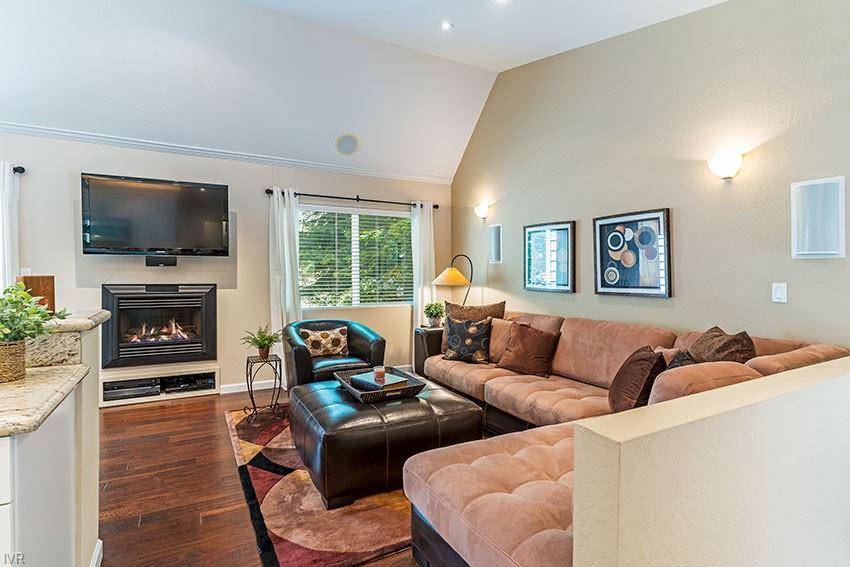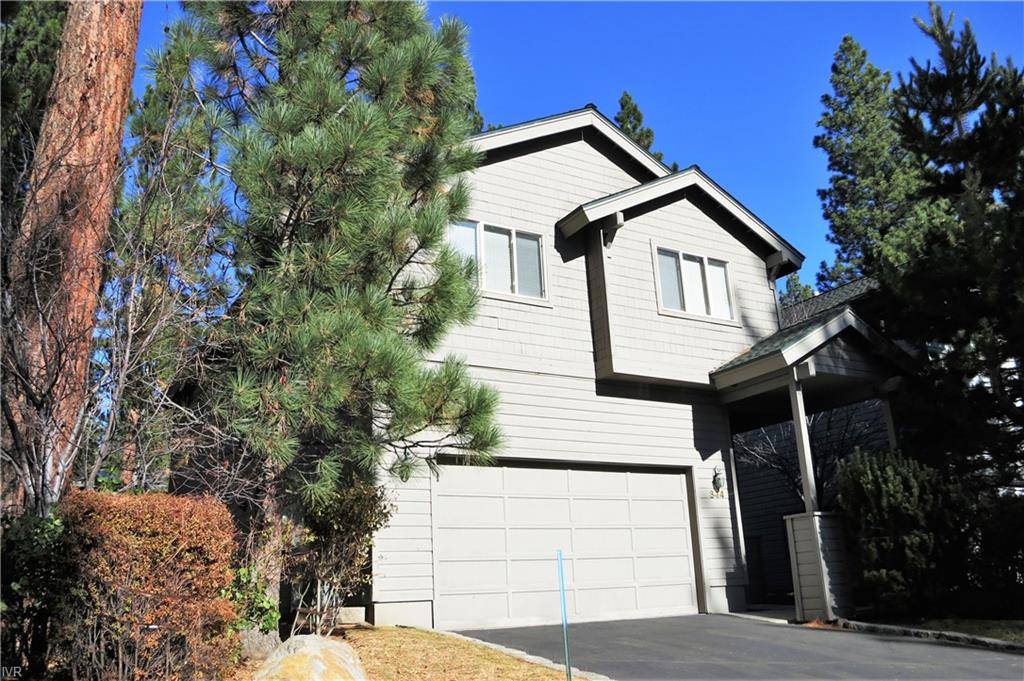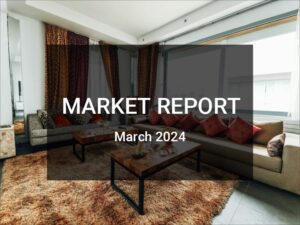
There’s a famous scene in the 2015 Oscar-nominated film The Big Short where Jared Vennett, played by Ryan Gosling, tries to explain the pending real estate market crash (and the ensuing EXTREME money-making opportunity for those who foretold it) by playing Jenga.
It perfectly encapsulated how the housing bubble burst, and how a few astute, yet decidedly morose, investors became filthy rich, by playing the “Don’t pass” bar. Vennett’s most convincing line: I’m standing in front of a burning house, and I’m offering you fire insurance on it!”
The whole idea that the real estate market was built on such shaky ground was hard for many to understand, which is why only a few benefitted financially by betting against the market while so many others went under.
But are we at risk of repeating the same mistakes that led to the market crash in the first place? Is the house on fire…again? It wouldn’t be all that surprising. Whether you believe the crisis was created by greedy banks, greedy borrowers, Wall Street incompetence (in combination with greed), all of the above, or other factors entirely, one thing is certain: memories are as short as the title of the movie.
Current market conditions
Overall, the real estate market remains strong, although there are signs that some of the fastest-appreciating markets over the past few years, like San Francisco, may be starting to crest (“Home prices in the San Francisco Bay Area were down 1.8% on a year-over-year basis in March, the first such drop in four years,” said MarketWatch).
DS News noted the mortgage default rate “was creeping up” at the end of last year – not enough to sound the alarm, but definitely worth noting, especially in the context of where we were before the market crash a decade ago.
“The first mortgage default index – one of four indices that make up the composite – ticked up by two basis points from 0.82 percent up to 0.84 percent. December marked the third consecutive month with an increase for the first mortgage default rate, which climbed by one basis point in November and five basis points in October,” they said. But, “Even after the three straight months of increases, December’s first mortgage default rate was still down by 18 basis points from December 2014’s rate of 1.02 percent.”
“Iffy” loan packages
“The wave of foreclosures starting in 2007 that dragged the economy into recession and triggered a global financial crisis was driven in large part by a collapse in underwriting standards,” said the New York Times. “Lenders offered mortgages to people with wildly inadequate incomes or down payments or documentation. Lending standards are much tighter now.”
Presumably, that’s still true. But a few new products and programs aimed squarely at those who can’t afford much but want to buy a home anyway may be worrisome. Are more relaxed loan restrictions an indicator that a new wave of defaults awaits down the line? Are they an overreaction to a market that’s been on the upswing or a genuine desire to open up homeownership to a new group of buyers? Perhaps it depends on if you’re a realist or an optimist.
And which side of the homebuying equation you’re on.
For buyers, the new Affordable Loan Solution Mortgage from Bank of America is a blessing. This new loan product offers a down payment lower than FHA at three percent, and without Private Mortgage Insurance (PMI).
“The program, a partnership between Bank of America, Freddie Mac, and non-profit Self-Help Ventures Fund, is targeted towards low – and moderate – income borrowers,” said The Street. “To qualify, borrowers can’t make more than the HUD area median income and must have a credit score of 660 or higher. As an example, for 2016, New York City-based borrowers with a household of one would need an income below $65,200 to qualify for the program. The median income threshold could rule out a lot of potential borrowers. Even still, Bank of America expects to originate $500 million of loans under the program this year.”
That’s A LOT of loans to buyers who, if they default, offer zero protection for BofA. And it’s not the only new loan targeting millennials with low down payments and no PMI.
“SoFi, an online lender initially focused on offering a student loan refinancing product, now originates mortgages in 25 states and Washington D.C. SoFi’s mortgages allow borrowers to put down as little as 10% without requiring PMI,” they said.
PMI is a nuisance for borrowers, for sure. Adding a couple hundred dollars to your monthly payment when you’re already struggling to make monthly payments is a drag. But that’s, quite literally, the price you pay for not being better qualified or having more money to put down. Right?
Even more concerning: “While traditional lenders may have firm debt-to-income limits (generally up to 45%), SoFi has more fluid debt-to-income limits, which may allow borrowers to ultimately qualify for more financing, up to a maximum of $3 million.
Streamlining it
The Streamline Refinance is another program that may need a little more oversight – or an overhaul – down the line if the default rate rises to an uncomfortable level.
“The FHA Streamline is a refinance mortgage loan available to homeowners with existing FHA mortgages,” said The Mortgage Reports. “The program simplifies home refinancing by waiving the documentation typically required by a bank, including income and employment verification, bank account and credit score verification, and an appraisal of the home.”
The Streamline Refi does take into account a borrower’s payment history. But all that other stuff that banks require to judge the worthiness of a buyer and a purchase are gone. Again, great for a borrower. Maybe not so much for the institution doing the lending. You could be a broke, jobless mess living in a house that you’ve trashed, but as long as you haven’t been late on any of your house payments (yet), you can refinance, which will lower your payment but raise what you owe. Better hope values don’t take a hit in your neighborhood.
The return of the ARM
For many, even the mention of an ARM is enough to give them foreclosure flashbacks. Brace yourself: they appear to be making a comeback.
“Adjustable rate mortgages, the bane of consumer advocates, and the trap door for hundreds of thousands of homeowners who saw their mortgage payments rise in the heat of the Great Recession, are staging a comeback,” said The Street. Michael Moskowitz, president of Equity Now, a direct mortgage lender in New York, told them: “Now there are signs that adjustable rate mortgages, which faded out of sight a few years ago, may be achieving a new life of sorts,” says. “Some borrowers see them as a way to save money and to make it easier to qualify for a mortgage.”
So what does this all mean in bubble terms? Not surprisingly, no one knows for sure. And, as far we we know, Vennett isn’t waiting around with a Jenga game for round two. But, the combination of iffy loans and rising rates – they’ve already gone up once this year and chatter is they’re rising again this month – is worth paying attention to.
“Right now interest rates are still low,” said Investopedia. “That means that mortgages are still cheap, and people have access to them.” But, with rising rates, “The demand will shrink, and thus the housing prices will level off or drop.”
If the job market also takes a hit or other economic conditions transpire, we could have another problem on our hands.
“We are putting a lot of buyers into homes who have very little skin in the game,” said the Claremont Courier. “This works fine as long as people keep their jobs and the market keeps moving upward, but what happens when the economy turns around for other reasons? When lenders used to require 20 percent down, borrowers had enough built-in equity that they could often weather the storm if prices declined. They had enough equity to likely prevent them from being “underwater” on their mortgage. But what happens when prices trend downward, the real estate market turns and people find themselves needing to sell their homes, and they only had 3.5 or 5 percent equity to start with? This could cause another large string of defaults on homeowner’s mortgages.”
If there’s one thing we know for sure: buying a home is no game. And there are few winners – when people start losing them.
| Buying, selling, decorating, improving, or maintaining your home? Click here to sign up for our daily headlines. |







